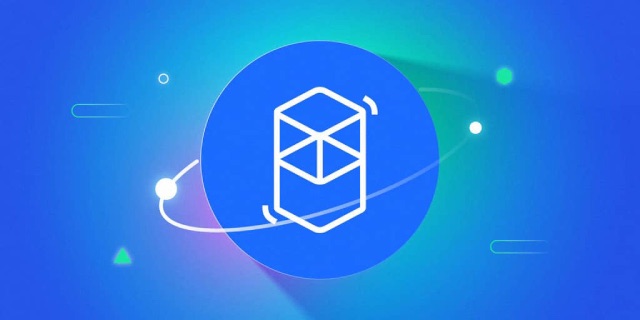
What is Fantom (FTM)?
Created in 2018, Fantom is a Layer-1 cryptocurrency project designed to be a faster, cheaper and more interoperable platform that is compatible with the Ethereum Virtual Machine (EVM), the base platform network to build Ethereum-compatible projects. Fantom has its own native token, the FTM, which has different uses and frameworks as we’ll uncover later in the article – besides being a trade mechanism amongst Fantom users.
The Fantom cryptocurrency was originated by the Fantom Foundation through its first official whitepaper, released on October 25th of 2018. Behind its creation were the computer scientists and developers Jiho Park, Sang-Min Choi, Quan Nguyen and Andre Cronje, who is also popularly known as the founder of Yearn Finance (YFI). In Fantom’s whitepaper, the purpose of the network is quite straightforward: to create a cheaper, faster and more secure blockchain compatible with EVM through two main algorithmic frameworks: Directed Acyclic Graph and Asynchronous Byzantine Fault Tolerance – hang in there, these terms will be explained.
Since its conception, Fantom has gradually climbed the ranks to be considered one of the main working projects to date. With the rise of Layer-1 crypto solutions in 2020 and 2021 such as Solana, Terra and Cardano, Fantom also skyrocketed in popularity as a proven method of cheap, easy-to-build platform with large scalability potential. So much so that, in January of 2022, Fantom surpassed the BNB Smart Chain as the third-largest DeFi blockchain in crypto.
How does Fantom work?

Schematics of the Fantom Opera network layers. Source: Justmy2Satoshis, on Medium
Although the Fantom Foundation was created in late 2018, the actual cryptocurrency was only activated in December of 2019, when the network and its FTM token were ready to be battle-tested as means to access EVM-compatible contracts through a different blockchain infrastructure. The Fantom network, often referred to as the Fantom Opera, operates under a Proof-of-Stake (PoS) consensus layer where holders of the FTM token can utilize it to operate nodes, validate transactions and receive rewards in return.
The use of PoS allows Fantom to operate as an optimized network for the development of decentralized apps (dApps), especially DeFi, making it compatible with large DEX and lending projects such as Curve, Sushi or Fantom co-founder’s Yearn Finance, all utilizing the MetaMask crypto wallet as its intermediary.
DAG, Fantom Opera’s core pillar
As mentioned previously, one of the two main frameworks that make Fantom special is its DAG structure, or Directed Acyclic Graph. Think of DAG as an updated version of the blockchain concept, with its own advantages compared to the traditional model. Picture a tree: in simple terms, a DAG is basically a chain of knots and verticals (unlike the linear blocks of a blockchain) that are connected by several different branches indicating the transactional process of the network. Therefore, on Fantom, each knot represents a particular transaction that was processed in its blockchain, simultaneously with other operations. Since the network functions in an asynchronous manner, new operations and tasks can begin and end at any moment – unlike the traditional blockchain model, which is linear. It also allows the Fantom Opera to keep track of the entire network in a continuous registry of cross-linked operations. It’s also very fast, taking less than a second for a task to be confirmed.
Lachesis, the Asynchronous Byzantine Fault Tolerance
Fantom’s aBFT is called Lachesis, and it’s basically a consensus mechanism across the entire system. In the future, Fantom will be able to implement several different blockchains in the network, and still keep Lachesis as its core consensus protocol. Amongst its qualities, Lachesis is asynchronous, leaderless (fully decentralized), supporting up to a third of malicious nodes (anti-byzantine fault) and with seemingly instantaneous transactions.
It works in the following manner:
First, the synchronization process of the nodes is initiated, followed by a random-selection algorithm which is executed to begin generating the next block in the blockchain. Upon selection, the communication between the randomly-picked nodes starts, which synchronizes the network through the DAG mechanism to verify the block’s transactional information. The block’s info is then transmitted to the responsible nodes and, once verified, through the aBFT consensus, approved to reinitiate the process with a new block.
What is the FTM token?

The cyclical growth structure behind FTM’s tokenomics. Source: Criptofacil
As discussed previously, FTM is the native token of the Fantom network – with equivalents in ERC-20 (Ethereum) and BEP-20 (BNB Chain) also available for use. Its main role in the network is to pay the node validators commission for verifying transactions, staking solutions and on-chain governance to vote for changes and updates to the project.
Regarding its tokenomics, FTM has a limited supply of 3.175 billion tokens, with 2.54 billion currently in circulation. Distributed daily as the network expands, these tokens are guided by the following framework:
· 40% dedicated to investors of public and private offerings.
· 15% allocated to advisors, with a three-month lock-in time.
· 10% to the founders, released after the first two years since the network came online.
· 3.6% is destinated to the protocol’s strategic reserves.
· 31.4% is to reward nodes in transactional commissions, which will be distributed until the end of 2024.
How to buy FTM
Fantom’s native token FTM can be purchased at WEEX multi-services platform through several ways; from a cash deposit, crypto deposit, credit card and P2P trade.
Once you have created a WEEX account, head over to the Trade section and select Spot Trading. You will be directed to WEEX’s main trading hub. From the top-left corner, search FTM to see what pairs are available to trade from – the most popular one being FTM/USDT.
If your account already has the proper funds to pair with the trade, you are ready to execute your order!
